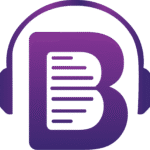Starting a PhD is an exhilarating journey, often marked by the thrill of diving into a new research area. But for many, including me when I first began, that initial excitement can quickly turn into a feeling of “where do I even begin?” especially when your specific topic is handed down by a mentor or research group. This is precisely where a well-executed literature review becomes your indispensable compass.
Why Your Literature Review is Your PhD’s True North
I like to think of your literature review not just as a task, but as the foundational bedrock of your entire doctoral work. It’s that critical first step that transforms a vague idea into a concrete research plan. Here’s why I believe it’s paramount right from the beginning:
- Understanding the Scientific Landscape: It helps me grasp the current state of scientific knowledge in my field, identifying what’s known, what’s debated, and what’s still a mystery.
- Informing Study Design: A thorough review illuminates successful methodologies, giving me hints on how to design my own study effectively. It also reveals common pitfalls and challenges encountered in similar previous designs, helping me avoid costly mistakes. If numerous similar studies exist, it always prompts me to ask the crucial question: why am I doing this again, and how will my work add unique value?
- Unearthing Unanswered Questions: This is where I find the true innovation lies. The literature review isn’t just about repeating research; it’s about identifying gaps in current knowledge and formulating questions that my research can uniquely address, pushing the boundaries of discovery.
- Powering My Discussion Section: When it comes time to write my dissertation, my literature review provides the essential context for debating my results against existing data and justifying my study’s design.
- Paving the Way for Future Research: It often highlights areas where more investigation is needed, guiding my future research trajectory and even paving the way for post-doctoral work.
Navigating the Initial Tsunami: Organizing My Resources
My initial plunge into a literature review almost always began with a PubMed (or similar database) search, which could quickly feel like being hit by a tsunami of information. This is where robust organizational strategies became my best friend.
Tools like Mendeley or EndNote are invaluable for managing citations, PDFs, and annotations, helping me maintain an overview of my growing collection. However, I found that I truly preferred a more hands-on approach for my own system:
- Manual Folder Organization: I created categorized folders (e.g., by sub-topic, methodology, or key concept) in my Dropbox account. This allowed me to access my PDFs anytime, anywhere.
- Standardized Filenaming: I developed a consistent naming convention, like
__year__first-author__title.pdf. This made finding specific papers a breeze.
The key, I learned, is to find a system that works intuitively for you and helps you quickly retrieve the information you need.
The Art of the Skim and Deep Dive: Making Reading Productive
Let’s be honest: reading scientific papers can sometimes feel like a chore. To maximize my time and extract crucial information, I adopted a strategic reading approach:
- Start with the Abstract: This is my gatekeeper. If the abstract doesn’t pique my interest or seem relevant, I move on.
- Background (When New to a Topic): I briefly skim the introduction to get my bearings, especially if the topic is entirely new to me.
- Quick Look at Methods: I aim to understand the general approach, but I don’t get bogged down in minutiae unless it’s directly relevant to my own methodology.
- Deeper Look at Results and Limitations: This is the core. What did they find? What were the constraints of their study? These are crucial for understanding the validity and applicability of their findings.
- The Discussion Section – My Treasure Map: This is arguably the most important section for a literature review. I always scan for:
- Interpretations of results.
- Connections to other existing literature (cross-references are gold!).
- Crucially, identified limitations and future research directions.
This is where I believe tools like Briefio can truly revolutionize your process. AI-powered summarization, especially when engineered to understand the nuances of scientific papers, can quickly distill complex texts into their most important topics. This enables you to:
- Get a rapid overview: Quickly grasp the main points of numerous papers.
- Prioritize effectively: Identify papers that are absolutely essential for a detailed read versus those you can skim or even skip. This saves invaluable time and helps you focus your energy.
How Many Papers are Enough? The Evolving Nature of Understanding
I’ve found there’s no magic number for how many papers you need to review. The “completeness” of your literature review depends on several factors:
- Your Prior Knowledge: If you’re entering a completely new field, you’ll naturally need to review more foundational papers.
- The Purpose of Your Review: A review for a small pilot study protocol will differ in scope from one for your dissertation’s discussion section or a comprehensive grant application.
- The Breadth and Depth of the Field: Some fields are vast and rapidly evolving, requiring ongoing review, while others might be more contained.
My personal strategy is to start with the latest papers in my chosen space. I seek out existing review papers (meta-analyses, systematic reviews) as they provide an excellent synthesis of current knowledge and often contain extensive reference lists. Then, I deep dive into the references of these key papers, working backward to understand the seminal works.
Capturing Insights: The Power of Notes
As I read, I actively engage with the material by taking notes. Whether I’m an old-school notebook fan (which I often am!), a Goodnotes devotee, or prefer digital tools, the act of writing helps solidify my understanding and connect ideas.
For each note, I always make sure to include:
- The Reference: (e.g., Year, First Author) – essential for accurate citation later.
- Key Takeaways: What was interesting or surprising? How does it relate to my own work?
- Potential Applications: For example: “Could help discuss the safety signals of X drug.” or “Identifies an interesting unexpected result that challenges current thinking.”
- Cross-References: I make a note of other papers mentioned that seem relevant for further exploration.
These notes aren’t just summaries; I consider them my emerging insights, connecting disparate pieces of information and forming the unique narrative of my research.
While a traditional notebook offers tactile benefits, digital tools for note-taking are constantly evolving. I’ve heard great things about exploring options like Obsidian, Roam Research, or even Notion, which allow for powerful cross-linking of notes, creating a “web” of knowledge that can be incredibly insightful for complex literature reviews.
In conclusion, mastering the literature review is an evolving process, not a one-time event. It requires a strategic approach to information retrieval, active reading, robust organization, and insightful note-taking. By embracing the right tools and techniques, I truly believe you can transform this initial overwhelming task into a powerful engine for discovery and a cornerstone of your successful PhD journey.





